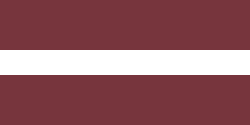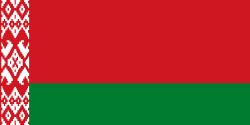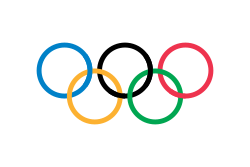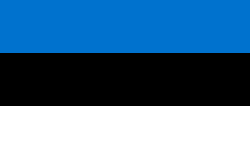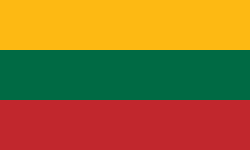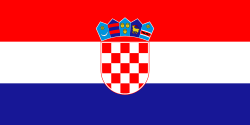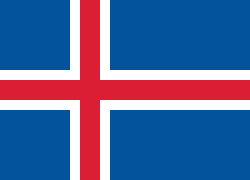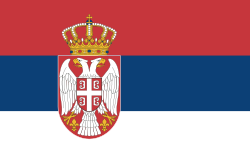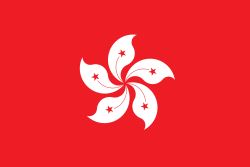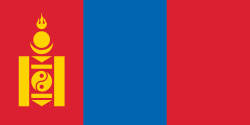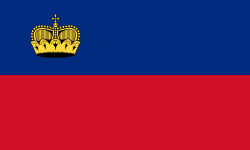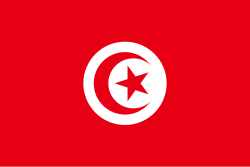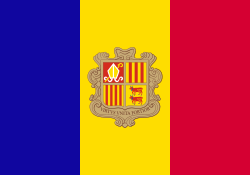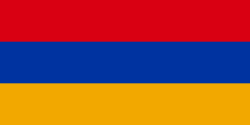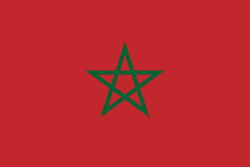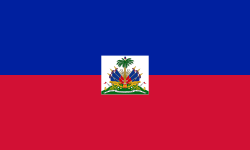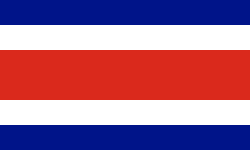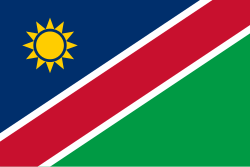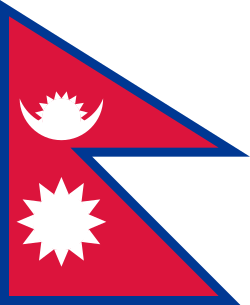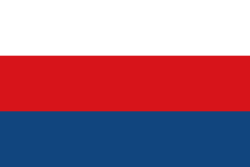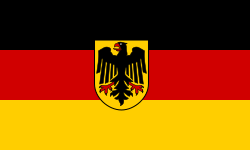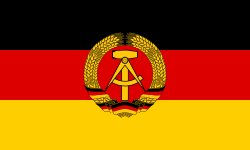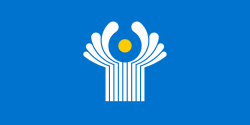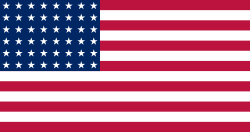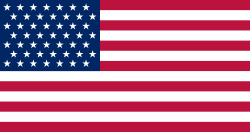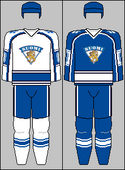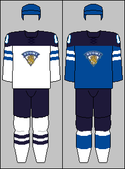Finská hokejová reprezentace
| Přezdívka | Leijonat/Lejonen |
|---|---|
| Asociace | Finský svaz ledního hokeje |
| Trenér | |
| Asistenti | Kari Lehtonen Mikko Manner Ari-Pekka Selin |
| Kapitán | Valtteri Filppula – |
| Nejvíce startů | Raimo Helminen (331) |
| Nejvíce bodů | Raimo Helminen (207) |
| Kód IIHF | FIN |
| První zápas | |
(29. ledna 1928, Helsinky, Finsko) | |
| Nejvyšší výhra | |
(12. března 1947, Hämeenlinna, Finsko) | |
| Nejvyšší prohra | |
(3. března 1958, Oslo, Norsko) | |
| Mistrovství světa | |
| Elitní skupina | 64× (poprvé v roce 1939) |
| Nejlepší výsledek | |
| Olympijský turnaj | |
| Účasti | 18× (poprvé v roce 1952) |
| Nejlepší výsledek | |
| Světový pohár | |
| Účasti | 2× (poprvé v roce 1996) |
| Nejlepší výsledek | |
| Euro Hockey Tour | |
| EHT | 27× (poprvé v roce 1996/1997) |
| Nejlepší výsledek | |
| Stránka týmu na IIHF.com | |
Finské národní hokejové mužstvo patří mezi nejlepší národní reprezentační mužstva v ledním hokeji v současnosti. Největšími úspěchy mužstva jsou zlaté medaile z Mistrovství světa v ledním hokeji v letech 1995, 2011, 2019, 2022 a ze ZOH 2022 v Pekingu. Na ZOH 1988 v Calgary a ZOH 2006 v Turíně získalo stříbrnou medaili.
První mezistátní utkání sehrálo proti Švédsku 29. ledna 1928 v Helsinkách (prohrálo 1:8). Poprvé proti Československu hrálo Finsko 14. února 1949 na mistrovství světa a prohrálo 2:19 (proti samostatné české reprezentaci hrálo Finsko poprvé 25. dubna 1993 opět v rámci mistrovství světa a prohrálo 1:3).
Historicky první medaili z mistrovské soutěže reprezentačních mužstev získalo Finsko na Mistrovství Evropy 1985, na kterém obsadilo 3. místo.
V roce 2022 dokázala finská hokejová reprezentace získat zlatou medaili jak na ZOH v Pekingu, tak i na mistrovství světa.
Historické výsledky
Mistrovství světa
| Rok | Místa turnaje | Umístění |
|---|---|---|
| KP – 1976 | Montreal, Toronto, Philadelphia, Winnipeg, Ottawa, Quebec | 6. místo |
| KP – 1981 | Montreal, Winnipeg, Ottawa, Edmonton | 6. místo |
| KP – 1984 | Halifax, Montreal, Calgary, Londýn, Edmonton, Vancouver, Buffalo | |
| KP – 1987 | Calgary, Hamilton, Ottawa, Halifax, Montreal, Sydney | 6. místo |
| KP – 1991 | Toronto, Hamilton, Montreal, Ottawa, Quebec, Saskatoon, Chicago, Detroit, Pittsburgh |
| Rok | Místa turnaje | Umístění |
|---|---|---|
| SP – 1996 | Stockholm, Helsinky, Praha, Garmisch-Partenkirchen, Ottawa, Philadelphia, Montreal, Vancouver, New York | 5. místo |
| SP – 2004 | Helsinky, Stockholm, Montreal, Kolín nad Rýnem, Saint Paul, Praha, Toronto |
Galerie dresů reprezentace
| ZOH 1994 | ZOH 2010 | ZOH 2014 | ZOH 2018 | ZOH 2022 |
 | 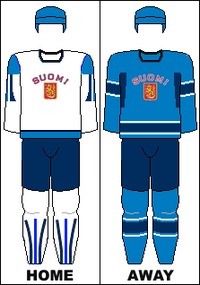 | (c) Realismadder, CC BY-SA 3.0 |  |  |
| 1998-2004 | 2014–2017 | 2018–2021 | 2022 | SP 2016 |
 | 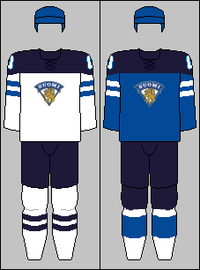 |  |  |  |
Hlavní trenéři
|
|
|
|
Vyřazená čísla z reprezentace
- 5 - Timo Jutila
- 8 - Teemu Selänne
- 11 - Saku Koivu
- 14 - Raimo Helminen
- 16 - Ville Peltonen
- 17 - Jari Kurri
- 26 - Jere Lehtinen
- 44 - Kimmo Timonen
Externí odkazy
 Obrázky, zvuky či videa k tématu Finská hokejová reprezentace na Wikimedia Commons
Obrázky, zvuky či videa k tématu Finská hokejová reprezentace na Wikimedia Commons - Finská hokejová reprezentace na IIHF
Média použitá na této stránce
Finská vlajka
Flag of Canada introduced in 1965, using Pantone colors. This design replaced the Canadian Red Ensign design.
An icon that represents a gold medal
An icon that represents a bronze medal
This is the national flag of Belgium, according to the Official Guide to Belgian Protocol. It has a 13:15 aspect ratio, though it is rarely seen in this ratio.
Its colours are defined as Pantone black, Pantone yellow 115, and Pantone red 032; also given as CMYK 0,0,0,100; 0,8.5,79,0; and 0,94,87,0.cancel symbol dark red
National flag and merchant ensign of Germany from 1933 to 1935.
National flag and merchant ensign of Germany from 1933 to 1935.
Flag of the Socialist Federal Republic of Yugoslavia (1946-1992).
The design (blazon) is defined in Article 4 of the Constitution for the Republic of Yugoslavia (1946). [1]
An icon that represents a silver medal
Vlajka České republiky. Podoba státní vlajky České republiky je definována zákonem České národní rady č. 3/1993 Sb., o státních symbolech České republiky, přijatým 17. prosince 1992 a který nabyl účinnosti 1. ledna 1993, kdy rozdělením České a Slovenské Federativní republiky vznikla samostatná Česká republika. Vlajka je popsána v § 4 takto: „Státní vlajka České republiky se skládá z horního pruhu bílého a dolního pruhu červeného, mezi něž je vsunut žerďový modrý klín do poloviny délky vlajky. Poměr šířky k její délce je 2 : 3.“
The Canadian Red Ensign used between 1921 and 1957.
This image has compared for accuracy (mainly colors) using an image from World Statesmen. The only change is making the maple leaves green from red. This image has compared for accuracy (mainly colors) using an image from World Statesmen. The most recent version of this image has changed the harp into one with a female figure; see [http://flagspot.net/flags/ca-1921.html FOTW
The Canadian Red Ensign used between 1921 and 1957.
This image has compared for accuracy (mainly colors) using an image from World Statesmen. The only change is making the maple leaves green from red. This image has compared for accuracy (mainly colors) using an image from World Statesmen. The most recent version of this image has changed the harp into one with a female figure; see [http://flagspot.net/flags/ca-1921.html FOTW
(c) I, Cmapm, CC BY-SA 3.0
The flag of the Soviet Union (1955-1991) using a darker shade of red.
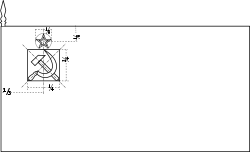
(c) I, Cmapm, CC BY-SA 3.0
The flag of the Soviet Union (1955-1991) using a darker shade of red.

Olympijská vlajka
Flag of Australia, when congruence with this colour chart is required (i.e. when a "less bright" version is needed).
See Flag of Australia.svg for main file information.Při zobrazení tohoto souboru lze snadno přidat orámování
The Flag of Iceland.
- Horizontal aspect ratio: 7:1:2:1:14;
- Vertical aspect ratio: 7:1:2:1:7.
Georgian flag in Pantone MS.
Chinese Taipei Olympic Flag. According to the official website of Chinese Taipei Olympic Committee, Blue Sky(circle) & White Sun(triangles) above the Olympic rings is neither the National Emblem of the Republic of China, nor the Party Emblem of Kuomintang (KMT), but a design in between, where the triangles do not extend to the edge of the blue circle, as registered at International Olympic Committee in 1981 and digitally rendered in 2013. Besides, the blue outline of the five-petaled plum blossom is broader than the red one. Moreover, the CMYK code of the blue one and the Blue Sky & White Sun is "C100-M100-Y0-K0", and different from the Olympic rings (C100-M25-Y0-K0). Note that it's the only version recognized by IOC.
Used color: National flag | South African Government and Pantone Color Picker
| zelená | rendered as RGB 0 119 73 | Pantone 3415 C |
| žlutá | rendered as RGB 255 184 28 | Pantone 1235 C |
| červená | rendered as RGB 224 60 49 | Pantone 179 C |
| modrá | rendered as RGB 0 20 137 | Pantone Reflex Blue C |
| bílá | rendered as RGB 255 255 255 | |
| černá | rendered as RGB 0 0 0 |
The national flag of Kingdom of Thailand; there are total of 3 colours:
- Red represents the blood spilt to protect Thailand’s independence and often more simply described as representing the nation.
- White represents the religion of Buddhism, the predominant religion of the nation
- Blue represents the monarchy of the nation, which is recognised as the centre of Thai hearts.
Flag of Iran. The tricolor flag was introduced in 1906, but after the Islamic Revolution of 1979 the Arabic words 'Allahu akbar' ('God is great'), written in the Kufic script of the Qur'an and repeated 22 times, were added to the red and green strips where they border the white central strip and in the middle is the emblem of Iran (which is a stylized Persian alphabet of the Arabic word Allah ("God")).
The official ISIRI standard (translation at FotW) gives two slightly different methods of construction for the flag: a compass-and-straightedge construction used for File:Flag of Iran (official).svg, and a "simplified" construction sheet with rational numbers used for this file.
bendera Indonesia
Zelený pruh má znázorňovat většinové katolické obyvatelsto Irska, oranžový pruh reprezentuje protestantskou menšinu a bílý pruh uprostřed znázorňuje mír a harmonii mezi nimi.
Flag of Liechtenstein
Flag of Portugal, created by Columbano Bordalo Pinheiro (1857-1929), officially adopted by Portuguese government in June 30th 1911 (in use since about November 1910).
Při zobrazení tohoto souboru lze snadno přidat orámování
The national and official state flag of Haiti; arms obtained from File:Coat of arms of Haiti.svg. The civil flag can be found at here.
Flag of Jamaica. “The sunshine, the land is green, and the people are strong and bold” is the symbolism of the colours of the flag. GOLD represents the natural wealth and beauty of sunlight; GREEN represents hope and agricultural resources; BLACK represents the strength and creativity of the people. The original symbolism, however, was "Hardships there are, but the land is green, and the sun shineth", where BLACK represented the hardships being faced.
Flag of Namibia
Bundesdienstflagge (Flag of the federal authorities of Germany). Under German law, federal states, municipalities, institutions or private persons are not allowed to use this flag.
Flag of Serbia and Montenegro, was adopted on 27 April 1992, as flag of Federal Republic of Yugoslavia (1992-2003).
Flag of Serbia and Montenegro, was adopted on 27 April 1992, as flag of Federal Republic of Yugoslavia (1992-2003).
US Flag with 48 stars. In use for 47 years from July 4, 1912, to July 3, 1959.
Autor: Jágrmeister, Licence: CC BY-SA 4.0
The home and away jerseys of the Finnish national ice hockey team used at the 2022 Winter Olympics.
US Flag with 49 stars. In use 4 July 1959–3 July 1960. It was defined in Executive Order 10798.
Autor: Realismadder, Licence: CC BY-SA 4.0
Finland national team jerseys from Winter Olympic Games 1998, 2002 and World Championships 1999-2004.
Autor: Realismadder, Licence: CC BY-SA 4.0
The home and away jerseys of the Finland national ice hockey team used at the 1994 Winter Olympics.
Autor: Jirka576W, Licence: CC BY-SA 4.0
Finnish national team jerseys from World Cup of Hockey 2016 ... Big thanks to Realismadder for a large share on these jerseys.
Autor: Realismadder, Licence: CC BY-SA 4.0
The home and away jerseys of the Finland national ice hockey team used at the 2018 Winter Olympics.
Autor: Realismadder, Licence: CC BY-SA 3.0
The home and away jerseys of the Finnish national ice hockey team with the Finnish coat of arms in the middle, as used at the 2010 Winter Olympics in Vancouver. Based on the version made by MiRoWaLTTeRi:

Autor: Realismadder, Licence: CC BY-SA 4.0
The home and away jerseys of Finland national ice hockey team used from the 2018 IIHF World Championship.
Autor: Realismadder, Licence: CC BY-SA 4.0
The home and away jerseys of the Finnish national ice hockey team used from the 2014 IIHF World Championship.
(c) Realismadder, CC BY-SA 3.0
The home and away jerseys of the Finnish national ice hockey team with the Finnish coat of arms in the middle, as used at the 2014 Winter Olympics in Sochi.
The Canadian Red Ensign used between 1921 and 1957.
This image has compared for accuracy (mainly colors) using an image from World Statesmen. The only change is making the maple leaves green from red. This image has compared for accuracy (mainly colors) using an image from World Statesmen. The most recent version of this image has changed the harp into one with a female figure; see [http://flagspot.net/flags/ca-1921.html FOTW
(c) Sakal77, CC BY-SA 2.0
Semifinal Russia vs. Finland 1:2 OT; Khodynka Arena
Autor: Jágrmeister, Licence: CC BY-SA 4.0
The home and away jerseys of Finland's national ice hockey team used from the 2022 IIHF World Championship.

























